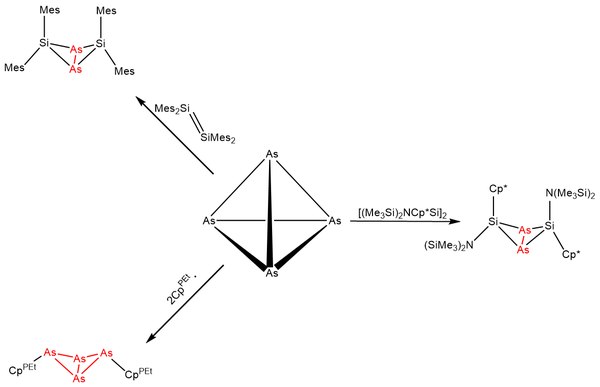wherearewegoing.net – Arsenic, a chemical element with the symbol As and atomic number 33, is a metalloid that exhibits a variety of allotropes. These allotropes are different structural forms of the same element, each with distinct physical and chemical properties. This article provides a detailed overview of the main allotropes of arsenic, their structures, and their potential applications.
Main Allotropes of Arsenic
1. Grey Arsenic (α-As)
Grey arsenic is the most stable allotrope at ambient conditions. It consists of layers of puckered hexagons in a rhombohedral crystal structure. The atoms in grey arsenic adopt a layered arrangement, which gives it unique mechanical and electronic properties.
2. Yellow Arsenic (α-As4)
Yellow arsenic is composed of As4 tetrahedra. This allotrope is less stable than grey arsenic and is typically formed under high-pressure conditions. The tetrahedral structure of yellow arsenic contributes to its distinct optical and electronic properties.
3. Black Arsenic
Black arsenic is another allotrope of arsenic, which has a layered structure similar to grey arsenic but with a different arrangement of atoms. This allotrope is also less stable than grey arsenic and is formed under specific conditions.
Additional Allotropes and Nanostructures
4. Semiconducting Layered Arsenic
Recent studies have proposed four different thermodynamically stable structural phases of arsenic monolayers. These phases exhibit unique electronic properties and can switch into a topological insulator via an electric field, making them promising for future electronic applications.
5. Icosahedral and Ring-Shaped Allotropes
Predictive studies have suggested the existence of two novel families of arsenic nanostructures: icosahedral cages and ring-shaped chains. These nanostructures have been predicted to exhibit unique mechanical and electronic properties, which could be exploited in nanotechnology.
6. K4 Arsenic
A new stable direct-gap arsenic allotrope, K4 arsenic, has been discovered. Unlike the known stable crystalline arsenic allotropes with layered structure at ambient conditions, K4 arsenic is a non-layered 3D phase. This allotrope exhibits dynamic stability and unique electronic properties.
Applications and Potential
The study of arsenic and its allotropes provides valuable insights for the development of next-generation materials. The unique structures and properties of these allotropes make them suitable for various applications, including:
- Electronic Devices: The semiconducting properties of certain arsenic allotropes make them promising for use in electronic devices, particularly in the development of topological insulators and other advanced electronic materials.
- Nanotechnology: The predicted icosahedral and ring-shaped allotropes of arsenic could be used in the design of novel nanomaterials with unique mechanical and electronic properties.
- Thermoelectric Applications: Research on the thermoelectric properties of arsenic monolayers has shown potential for their use in energy conversion technologies.
Conclusion
Arsenic and its allotropes represent a fascinating area of study with significant implications for materials science and technology. The unique structures and properties of these allotropes offer a wealth of opportunities for the development of new materials and technologies. Continued research in this field is expected to uncover even more potential applications and deepen our understanding of the fundamental properties of arsenic.
